What happened to these two boys is a mystery - but they are not encased in that urn at Westminster Abbey.
|
On the 2nd of November in 1470, Edward, the eldest son of Edward IV and Elizabeth Woodville was born at Cheyneygates, the home of the Abbot of Westminster. He was heir to the throne. Edward was brought up at Ludlow Castle on the Welsh Marches. At the age of twelve, he ascended the throne on the death of his father, however, he and his brother Richard of Shrewsbury were found to be illegitimate when the pre-contracted marriage of his father to Eleanor Butler came to light. Before Edward could be crowned, he and his younger brother disappeared.
What happened to these two boys is a mystery - but they are not encased in that urn at Westminster Abbey.
0 Comments
The 17th August 1473 is the date of birth of Richard of Shrewsbury, the second son of Edward IV and Elizabeth Woodville. Richard of Shrewsbury is, of course, was one of the Princes in the Tower. What we know of Richard can be viewed through the titles that were bestowed upon him and the dates and events that made up his life. His birth, as his name suggests, was at Shrewsbury, his marriage, at just four years old was to Anne Mowbray. We do not even know what he looked like but this doe's not stop writers, artists and film/television producers portraying him as an innocent, as angelic, a pure almost saintly child. Shakespeare has John Dighton calling Richard and his brother Edward ‘gentle babes.' They are emotive words that were intended to describe Richard's character - a foil to Shakespeare's protagonist, his uncle Richard of Gloucester in his play Richard III. Shakespeare's portrayal of the young prince would be used again and again over the years by artists, the most famous by Paul Delaroche and John Everett Millais, even the horror movie genre gets in on the act - John Herbert-Bond's young prince to Basil Rathbones Duke of Gloucester. Despite the fact that there is no evidence either way as to what happened to the princes, the tale of Richard's disappearance is the one event that defines this little boys life.
On the 6th of May in 1502, Sir James Tyrell was executed for treason, his crime, contrary to what most people think and what the chronicles of history tell us, was not the murder of the Princes in the Tower but his support of the Yorkist cause. His downfall you might say was in 1501, when he sheltered Edmund de la Pole, Earl of Suffolk and let him escape to France. Tyrell never confessed to harming the Princes, his name wasn't mentioned in reference to their disappearance until ten years after his death. The most famous account, of course, was written by Thomas More in his History of Richard III, he states "...very truth it is and well known that at such time as Sir James Tyrell was in the Tower, for treason committed against the most famous prince King Henry the Seventh, both Dighton and he were examined, and confessed the murder in manner above-written, but whither the bodies were removed they could nothing tell." James Tyrell was beheaded outside the Tower of London, the usual place for a traitor. His body was interred in the Church of the Austin Friars in London.
The only images available to illustrate this post are of Tyrell doing away with the princes and that won't do! Instead, I've chosen to place an image of Thomas More writing his lies, and ensuring that Tyrell is seen as a villain for eternity. On this day in 1856 the death of one of my favourite French artists - Paul Delarouche. Delarouche had a 'straightforward technique that was firm, solid and smooth' he also had a wonderful talent for the dramatic. He was known to build little stage sets, including model figures to aid his work, he was also well known for his cloaked references to the French Revolution in which he often used English historical 'victims' such as Charles I, Lady Jane Grey and Thomas Wentworth to make a point. Delaroche cared little about historical inaccuracies if he succeeded in getting his point across to the French public. A good example of this is his painting The Princes in the Tower, for which he drew his inspiration from the work of Shakespeare, a story he knew to have some truth. With this in mind, he was able to make a comparison of the deaths of the two English boys to draw attention to the mysterious deaths of Louis XVII of France. Delaroche always denied any reference to the revolution in his works, but why would a French artist produce work based on the deaths of English victims of tyranny, if it was not to represent his own. Paul Delaroche had married Louise Vernet, daughter of a noted French artist famous for his portraits of battles/French revolution. He never recovered from Louise's death, his Head of an Angel was based on a study of her.
On the 8th September 1483, Edward of Middleham, the only child of Richard III and his wife Anne Neville was invested as the Prince of Wales in a spectacular ceremony in the city of York. The Crowland Chronicler writes of the occasion that Edward was "elevated to the rank of Prince of Wales, with the insignia of the golden wand, and the wreath upon the head; while, at the same time, he (Richard) gave most gorgeous and sumptuous feasts and banquets." Don't be fooled by the writer's tone, the chronicler was not writing of this event in a positive light, far from it. The chronicler went on to state that the celebrations were only for effect to 'gain the affections of the people' and paid for with the amassed wealth entrusted to Richard, as executor of his late brother Edward IV's will - taken it was written 'the very moment that he (Richard) had contemplated the usurpation of the throne.' What is interesting about this text is that there is a mention that the so called Princes in the Tower were actually in the Tower of London whilst the investiture took place - "in the meantime, and while these things were going on, the two sons of king Edward before-named remained in the Tower of London," surprisingly the writer doe's not seize the opportunity to relay to his readers exactly what happened to the two boys after the investiture seeing that most people thought Richard had 'done away with them' towards the end of the summer of 1483. The chronicler also goes on to state that Edward IV's daughters should leave the sanctuary of Westminster, and 'go in disguise to the parts beyond the sea; in order that, if any fatal mishap should befall the said male children of the late king in the Tower, the kingdom might still, in consequence of the safety of his daughters, some day fall again into the hands of the rightful heirs." The important word in that sentence is IF, doesn't this suggests that nobody, including the writer, knew what happened to the two boys at the time? We should bare in mind that the Crowland Chronicle was written two years after these events took place - the writers were spouting propaganda, words they thought their new king wished to hear, words that would keep them safe in the new Tudor era and by someone who was educated in law and who was privy to information within the royal court. The Benedictine residents of Crowland Abbey had at their head one Lambert Fossdyke who had been Abbot at Crowland since January 1484 and who was a Bachelor of Law and it was such a man with a degree in law who was considered to be the writer of malicious rumors about Richard III. John Russell, Bishop of Lincoln, is commonly thought to be the author but it could just as well have been Fossdyke dictating to one of his monks? Of Edward and Richard's fate there is no evidence, however poor Edward of Middleham would only live another seven months, he died in the April of 1484.
History tells us that the fate of the two young sons of Edward IV and Elizabeth Woodville was death, smothered in their beds by two men on the order of Richard III and their bodies buried at the foot of a set of stairs in the Tower of London. This tale comes from the pen of Thomas More in his History of Richard III. More writes "About midnight (the sely children lying in their beddes) came into the chamber, and sodainly lapped them vp among the clothes so be wrapped them and entangled them keping down by force the fetherbed and pillowes hard vnto their mouthes, that within a while smored and stifled, theyr breath failing, thei gaue vp to god their innocent soules into the ioyes of heauen, leauing to the tormentors their bodyes dead in the bed." and "Whiche after that the wretches parceiued, first by the strugling with the paines of death, and after long lying styll, to be throughly dead: they laide their bodies naked out vppon the bed, and fetched sir Iames to see them. Which vpon the sight of them, caused those murtherers........... to burye them at the stayre foote, metely depe in the grounde vnder a great heape of stones....... Than rode sir Iames in geat haste to king Richarde, and shewed him al the maner of the murther, who gaue hym gret thanks." Thomas More is not only responsible for the fact we consider a set remains, now resting in Westminster Abby, to be those of the two princes, but that their uncle was responsible for their deaths. I don't know what happened to these two boys in the summer of 1483, but what if More was wrong, what happened if they did survive? We are about to find out ...... Matthew Lewis's new book, The Survival of the Princes in the Tower: Murder, Mystery and Myth that is set for release at the beginning of September may tell us.
My photograph of the painting Sir Thomas More and His Family (after Hans Holbein the younger) by Rowland Lockey was taken last year on a visit to Nostell Priory, Yorkshire. The painting is the last item on show before you leave the building, it is placed at the bottom of a set of stairs and runs
parallel to them so you cannot see it until you are right in front of it. My jaw literally dropped when I saw it, I knew it was held at Nostell but I had forgotten it was there. It is a massive painting, I cannot describe how I felt when I saw it, it's simply wonderful......... I had to be dragged away with the promise of visiting again. Apart from it being a brilliant piece of art, it is full to bursting with symbolism. The question asked by many is "Who is the young man in the far right hand corner"? Matthew Lewis in his blog writes "The figure at the back marked 'Johanes heresius Thomas Mori family Anno 27' has long been believed to represent John Harris, Sir Thomas More's long standing secretary (Jack) Leslau, however, uncovered several interesting anomalies that he believed pointed to a different occupant for third position, and the unravelling of Engands great mystery. Leslau believed that this figure was, in fact, Dr John Clement, the husband of Margaret Giggs, Sir Thomas More's adopted daughter, and, more controversially, that Dr John Clement was the assumed identity of .....................????? " Click on the link below to find the answer. mattlewisauthor.wordpress.com/2014/07/26/leslau-holbein-more-and-clement/ Whenever the subject of the Princes in the Tower comes up, there are always lots of interesting responses regarding the find of skeletal remains of two children under a set of steps in the Tower of London which many still consider to be that of the two sons of Edward IV who disappeared in 1483. These remains eventually ended up in an urn in Westminster Abbey with the following inscription. 'Here lie interred the remains of Edward V King of England, and Richard, Duke of York, whose long desired and much sought after bones, after above an hundred and ninety years, were found by most certain tokens, deep interred under the rubbish of the stairs that led up to the Chapel of the White Tower, on the 17th of July in the year of our Lord 1674. Charles the second, a most merciful prince, having compassion upon their hard fortune, performed the funeral rites of these most unhappy princes among the tombs of their ancestors, anno domini 1678.' It is these remains, found under a staircase by workmen in 1674, that are still thought to be that of the two princes Edward and Richard of Shrewsbury. Why is that? What is interesting is the intense focus on this set of remains, they are only one, among a number of children's remains, that have been found in the Tower of London over the years that are said to be of Edward and Richard. Others include remains found when Sir Walter Raleigh was imprisoned in the Tower, remains found when the tower's moat was drained in the mid-nineteenth century, and in 1789 the two small child-size coffins that were found walled up in a 'hidden space' next to the vault holding the coffins of Edward V and his Elizabeth his queen. The real answer to this question is quite simple and pretty straightforward. Sir Thomas More in his The History of Richard III says it was so. More writes "About midnight (the sely children lying in their beddes) came into the chamber, and sodainly lapped them vp among the clothes so be wrapped them and entangled them keping down by force the fetherbed and pillowes hard vnto their mouthes, that within a while smored and stifled, theyr breath failing, thei gaue vp to god their innocent soules into the ioyes of heauen, leauing to the tormentors their bodyes dead in the bed." but here's the interesting bit...... "Whiche after that the wretches parceiued, first by the strugling with the paines of death, and after long lying styll, to be throughly dead: they laide their bodies naked out vppon the bed, and fetched sir Iames to see them. Which vpon the sight of them, caused those murtherers........... to burye them at the stayre foote, metely depe in the grounde vnder a great heape of stones....... Than rode sir Iames in geat haste to king Richarde, and shewed him al the maner of the murther, who gaue hym gret thanks." Thomas More is not only responsible for the fact that Charles II and everybody else considers these remains to be that of the two princes, but that King Richard III from then on was the prince's murderer.
The 'story' that the remains are of Edward and Richard, stems partly from the work of Professor William Wright and Dr. George Northcroft who published their findings in ‘The Sons of Edward IV. A re-examination of the evidence on their deaths and on the Bones in Westminster Abbey’ This work ought to be treated with caution, DNA aside, I wonder how it can be suggested that they were, in life, the princes, if they never established the sex of the skeletons? In 1986 it was pointed out that a couple of important facts from the study were not mentioned. Firstly, there were indications in "existing and unerupted teeth" that suggested that one of the skeletons was a female, and secondly, the age gap between the two remains was less than three years between the birth of the princes. IF these two boys met their deaths at the Tower, who in their right minds would place the bodies under the noses of all who were in the present at the time, without being seen and within a limited time frame? Others feel the same, suggesting there were better ways to get rid of the bodies than to hide them somewhere in the Tower itself. I don't know why More wrote what is written here, or what his motives were, I don't know what happened to the two princes in the summer of 1483, they may well have been murdered, but equally, they might not have been. What I do know is that it has never been proved that the two sons of Edward IV were dead at all. I also don't believe it is their remains at Westminster Abbey. |
Categories
All
Archives
May 2024
|

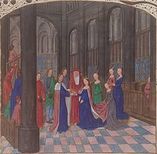
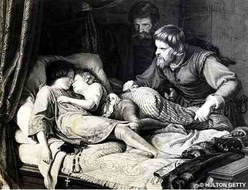
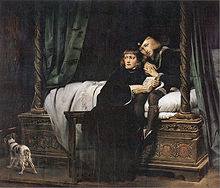
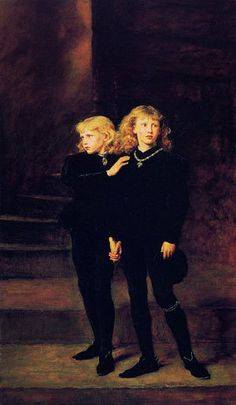
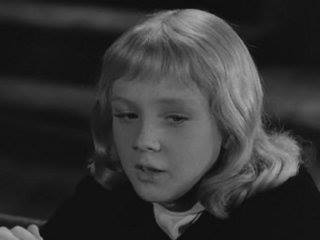
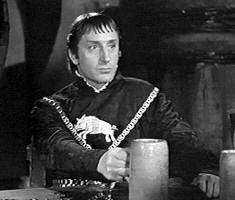
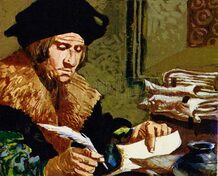

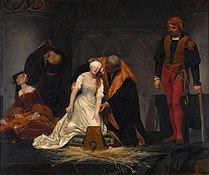
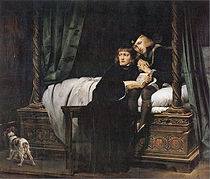
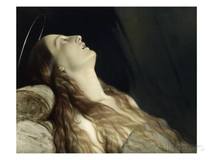
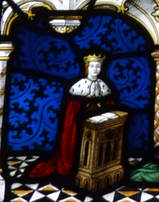
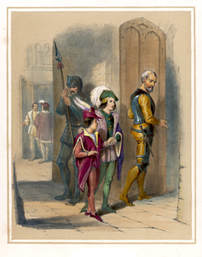
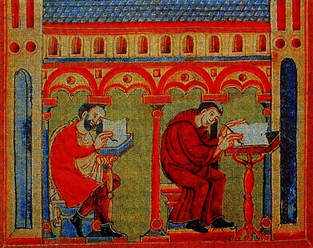
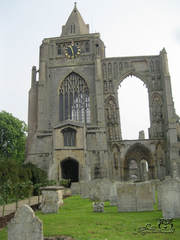
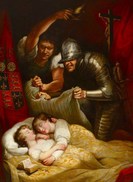
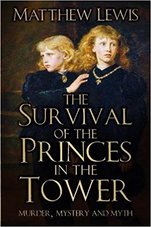
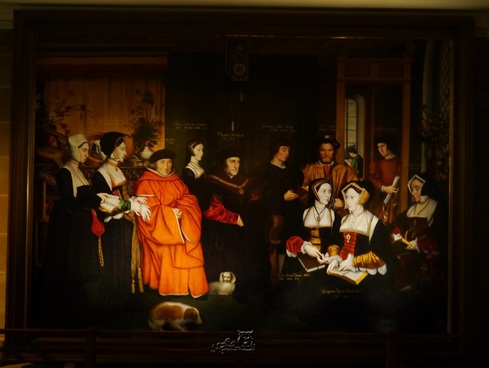
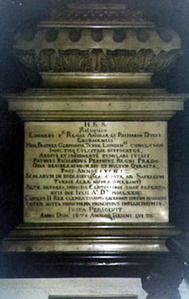
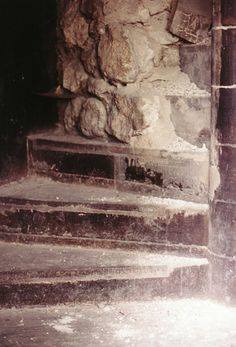
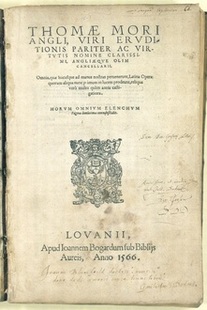
 RSS Feed
RSS Feed
